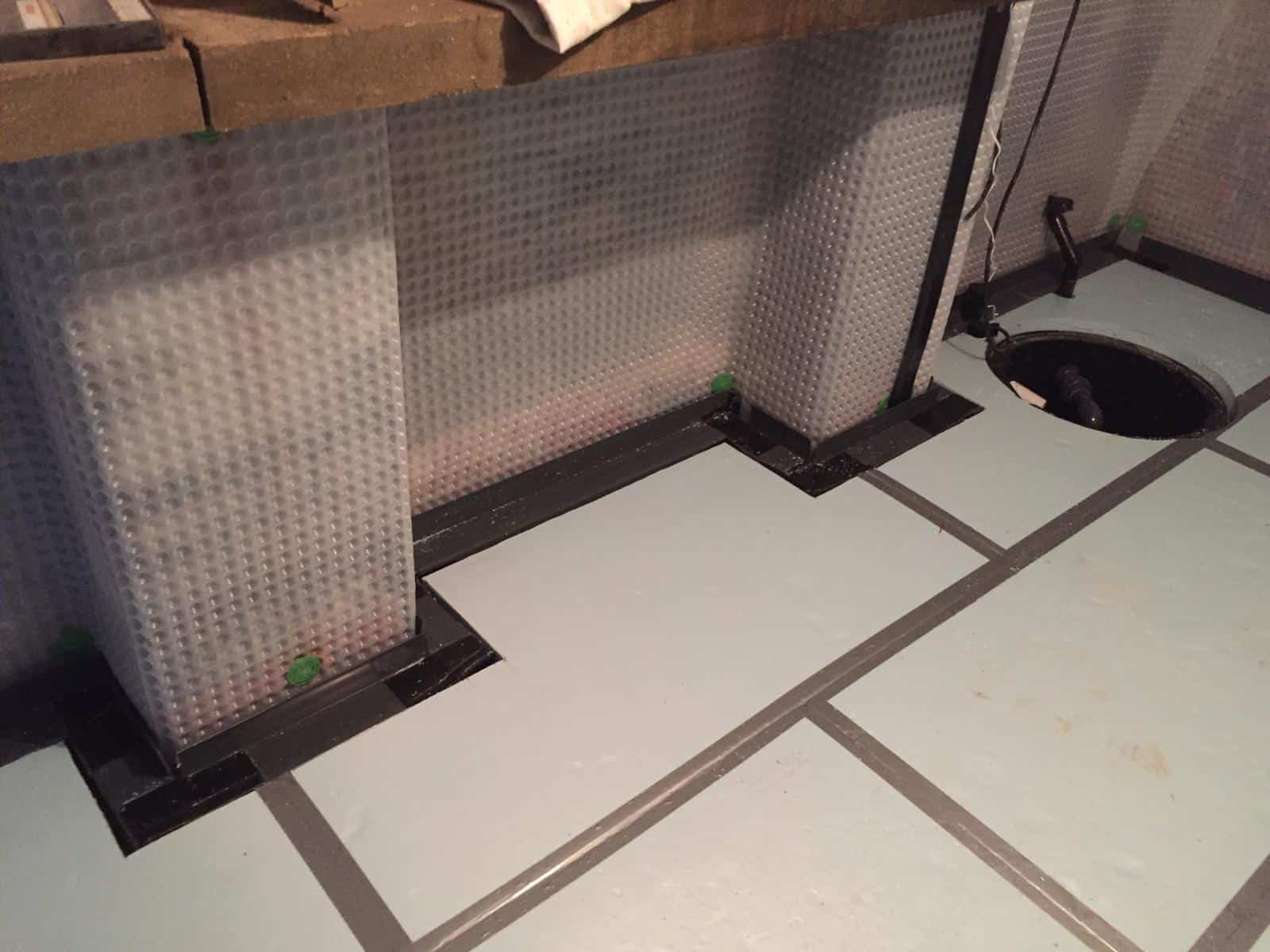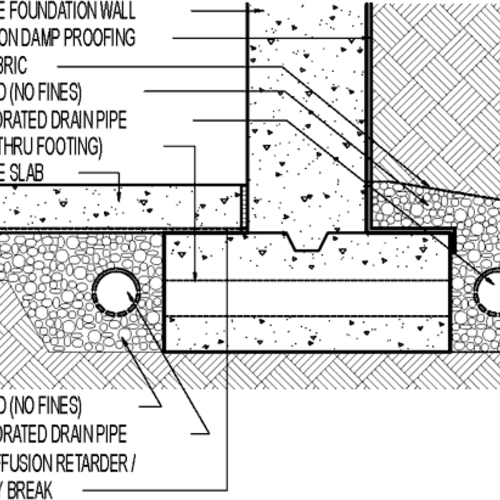Everything to know about choosing the best damp specialist newcastle for your property
Everything to know about choosing the best damp specialist newcastle for your property
Blog Article
Checking Out the Various Methods and Solutions for Effective Damp Proofing
Wetness in structures poses considerable difficulties to both architectural integrity and interior air top quality. Numerous strategies and solutions have emerged to combat this prevalent concern. From typical damp-proof membrane layers to innovative chemical therapies, each approach uses one-of-a-kind benefits. Comprehending these options is necessary for reliable moisture control. Picking the ideal service depends on particular building problems and needs, prompting further expedition right into the most effective moist proofing techniques available.
Understanding the Reasons For Wetness
Moisture can arise from different sources, understanding these causes is essential for reliable remediation. Typically, wetness stems from 3 main sources: increasing damp, penetrating moist, and condensation. Increasing damp happens when groundwater travels up via permeable materials, such as block or stone, commonly due to an absence of a reliable barrier (mould removal newcastle). Permeating damp is commonly brought on by external aspects, including roof covering leaks, malfunctioning seamless gutters, or harmed walls, permitting water to penetrate a building. Condensation, on the other hand, results from excess dampness airborne, typically exacerbated by bad air flow and temperature differences, leading to water beads forming on surface areas. Recognizing these underlying issues is necessary, as each sort of dampness needs a tailored technique for removal. Correct assessment aids in establishing one of the most efficient services, eventually protecting the architectural honesty of a building and enhancing indoor air quality
Typical Damp-Proof Membranes

Chemical Damp-Proofing Solutions
Chemical damp-proofing solutions use an ingenious technique to avoid moisture intrusion in buildings. These methods generally involve the application of liquid chemicals that pass through stonework and form an obstacle versus increasing moist. Frequently utilized chemicals include silanes, siloxanes, and other water-repellent agents that respond with surface area products to create a hydrophobic layer.The application process usually requires exploration openings right into the wall surfaces, infusing the chemical option, and enabling it to treat. This method is especially advantageous for older frameworks where conventional damp-proof membranes may be not practical. In addition, chemical damp-proofing can be much less disruptive and extra cost-effective than extensive remodelling projects.While effective, these remedies depend upon proper application and environmental problems for peak performance. Normal upkeep and tracking are important to assure the long life of the damp-proofing treatment. On the whole, chemical damp-proofing represents a functional option for guarding buildings against moisture-related damages
Cavity Wall Building And Construction Methods
Dental caries wall building and construction techniques provide countless advantages, especially in dampness control and power efficiency. By including an air space in between 2 layers of masonry, these wall surfaces effectively alleviate water access while enhancing insulation. This combination not just secures frameworks from dampness however also adds to lowered energy usage.
Benefits of Dental Caries Wall Surfaces
When thinking about reliable moist proofing techniques, the benefits of dental caries wall surfaces stand out plainly. Dental caries walls are composed of 2 separate layers, creating an air space that efficiently decreases moisture infiltration. This style decreases the threat of wetness, as the external wall functions as an obstacle against rain and water ingress. Additionally, cavity walls boost thermal insulation, which adds to power performance by lowering warmth loss. They additionally provide sound insulation, aiding to develop a quieter interior atmosphere. The air space allows for air flow, which assists in dampness control and minimizes the chance of mold and mildew development. These benefits not only boost the total convenience of a structure however likewise add to its longevity and architectural honesty.
Wetness Control Strategies
Reliable dampness control techniques are essential in cavity wall building to guarantee lasting protection versus moisture. One main method entails the incorporation of weep holes, which promote water drainage from the tooth cavity, preventing buildup. In addition, making use of breathable membrane layers can aid handle dampness degrees while enabling caught vapor to run away. Proper placement of insulation is likewise crucial, as it must not block drainage courses. Making certain that the external fallen leaves of the dental caries wall are constructed with water-resistant products boosts total durability. Regular maintenance checks are vital to determine any type of obstructions or damages early, guarding the framework's stability. Inevitably, a mix of these methods develops a durable protection against moisture intrusion in cavity walls.
Insulation and Energy Efficiency
Insulation plays a vital function in improving power effectiveness within dental caries wall surface building and construction. By including shielding materials, these walls produce a thermal barrier that minimizes heat loss and lowers power intake. Reliable insulation not just assists preserve a steady indoor temperature level but also mitigates the risk of dampness, as it prevents condensation within the wall surface cavity. Numerous strategies, such as the usage of stiff foam boards or mineral wool, can be used to accomplish suitable insulation performance. Additionally, correct installment is vital to assure that gaps and gaps are minimized, which can or else jeopardize power effectiveness. Inevitably, a well-insulated cavity wall adds substantially to overall sustainability and decreases heating & cooling prices for homeowners.
Exterior Damp Proofing Techniques
Outside moist proofing methods are necessary for securing frameworks from wetness infiltration. 2 effective techniques include the application of water-proof membranes and the installation of French drains. These remedies assist mitigate water accumulation and protect damp proofing newcastle the honesty of structures.
Waterproof Membrane Layer Application
While different techniques exist for stopping moisture ingress, the application of water-proof membranes remains a highly efficient outside moist proofing strategy. These membranes are typically made from products such as polyethylene, rubber, or modified asphalt, providing a robust barrier against water infiltration. The installment procedure involves using the membrane to the exterior surfaces of walls or structures, making certain complete coverage to stop leakages. Appropriate attachment and securing at joints are crucial to making the most of efficiency. Water resistant membrane layers can be used in numerous kinds, consisting of fluid coatings and sheet membranes, enabling flexibility based on the particular demands of the structure. This method not only secures structures from moisture however likewise enhances their longevity and architectural honesty.
French Drainpipe Installment
One efficient approach for taking care of groundwater and protecting against dampness accumulation around a structure's structure is the installation of a French drain. This drain system is composed of a trench loaded with gravel and a perforated pipeline that redirects surface area water far from the structure. Appropriate setup needs careful planning, ensuring that the drainpipe inclines away from the framework to promote suitable water circulation. In addition, the location of the drainpipe is essential; it should be positioned in locations vulnerable to pooling or excess dampness. Regular maintenance, consisting of cleaning particles from the crushed rock and making certain the pipeline remains unblocked, is crucial for long-term efficiency. Ultimately, a well-installed French drainpipe can greatly lower the threat of water-related issues in structures and basements.
Interior Waterproofing Techniques
Interior waterproofing strategies are crucial for safeguarding a building's inside from moisture infiltration and possible water damages. These strategies typically include the application of specific products and methods made to produce a moisture barrier within the structure. One typical technique is making use of waterproof layers or sealers on walls and floors, which protect against dampness from passing through surfaces.Additionally, installing interior water drainage systems, such as sump pumps, can efficiently handle water buildup in basements and creep areas. Another technique entails the usage of vapor obstacles, which are installed to hinder wetness movement from the ground into living spaces.Moreover, addressing any kind of splits or spaces in walls or structures with ideal sealers guarantees a complete defense against water breach. By carrying out these indoor waterproofing methods, homeowner can significantly minimize the risk of mold and mildew growth, structural damages, and other moisture-related concerns. Correct implementation of these strategies is important for lasting defense and building honesty.
Regular Maintenance and Assessment Practices
Regular maintenance and evaluation methods are crucial for guaranteeing the long-lasting effectiveness of wet proofing remedies in any kind of building. Regular checks allow property proprietors to identify very early indicators of wetness breach, such as peeling off paint, mold development, and mildewy smells. These indicators can signify underlying problems that call for immediate attention.Inspections ought to be carried out at the very least each year, concentrating on prone locations like basements, crawl rooms, and exterior wall surfaces. During these analyses, homeowner need to analyze sealers, drainage systems, and ventilation to confirm they function correctly.Additionally, preserving gutters and downspouts is crucial, as clogged up systems can bring about water accumulation near the structure. Applying a normal upkeep schedule, along with prompt repair services, can substantially extend the lifespan of moist proofing steps and shield the architectural integrity of the structure. Proactive actions eventually contribute to the overall health and wellness and safety of the living atmosphere.
Regularly Asked Questions
How Much Time Does Damp Proofing Commonly Last?
The duration of moist proofing effectiveness varies, typically lasting in between 20 to 50 years. Aspects such as application high quality, ecological problems, and upkeep practices significantly influence the longevity of the moist proofing treatment.

Can I Damp Evidence My Home Myself?
The private pondered the usefulness of DIY damp proofing. With proper research study and the right materials, it is possible. They likewise identified the relevance of expert assistance to ensure durable performance and prevent future concerns.
What Are the Indicators of Inefficient Damp Proofing?
Indications of ineffective wet proofing consist of consistent moldy odors, noticeable mold and mildew development, peeling paint, moist spots on wall surfaces, and timber degeneration - damp specialist newcastle. Homeowners ought to resolve these issues promptly to avoid additional damages and wellness worries
Does Damp Proofing Affect Indoor Air Top Quality?

Just How Much Does Expert Damp Proofing Expense?
Expert wet proofing expenses vary considerably, normally varying from $1,000 to $5,000 depending upon the residential property's size, the level of the wet problem, and selected approaches. Each circumstance calls for a tailored evaluation for precise pricing. Typically, dampness stems from 3 key resources: climbing moist, passing through damp, and condensation. When considering efficient damp proofing methods, the benefits of dental caries wall surfaces stand out plainly. Outside wet proofing techniques are vital for securing frameworks from moisture seepage. While different approaches exist for stopping wetness ingress, the application of waterproof membrane layers remains an extremely effective external damp proofing method. Indications of inefficient wet proofing consist of consistent moldy odors, visible mold and mildew development, peeling paint, wet patches on wall surfaces, and timber degeneration.
Report this page